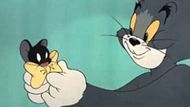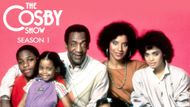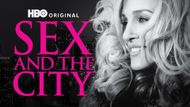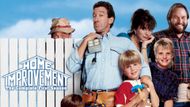Classic TV shows have a nostalgic quality, reminding viewers of when they first aired. They defined culture and fashion and provided humor in living rooms. However, things that were once innocent fun or even revolutionary may today seem outdated.
These shows are viewed differently, and their flaws are more obvious due to shifting social ideals. Sexism, a lack of diversity, stereotyping, or superficial humor has marred several classics. This article examines popular television shows that have had a long-standing cultural impact but have failed to survive.
Disclaimer: This article contains the writer's opinion. Reader discretion is advised.
Here is the list of the 7 classic TV shows that haven’t aged well over time
7. On the Buses (1969-1973)

On the Buses is a classic British TV show. At the time, it was very popular among the viewers, but when people see it now, they often view it differently. Its critics term it as sexist and an obscenity that does not match the current values. The show ridicules the female character Olive as ugly. The mocking of women's appearance has been considered unjust and disrespectful. It also has a young male cast who flirt with the two male leads. The humor is bad and outdated because it is based on sexual interest and age.
There is even a Black character named Chalky who uses his name as a nickname. Nowadays, such labeling appears to be disrespectful and out of touch. On the Buses has since come to be used as a byword by critics of older sitcoms characterised by poor humour and sexism. So, although it’s a classic TV show, many feel it hasn’t aged well.
6. Tom and Jerry (1940s-1950s shorts)

Tom and Jerry is a classic TV show known for its cartoon cat-and-mouse fights. People now observe taboo-like portions that make them feel awful. One of the characters is a house cleaner who is often referred to as Mammy Two Shoes and has a heavy accent and body language that is subject to past stereotypes of racism. Her personality is rarely shown, and she regularly refers to preconceptions about her race through her use of language. Since her representation was initially objectionable, civil rights organizations complained about it, and subsequent iterations either changed her voice or deleted her image.
There were countless blackface jokes since characters are often depicted in a stylized, mocking fashion when they are blown up or damaged in some way. These are things that were standard in cartoons way back when but are now things that make Tom and Jerry feel outdated and uncomfortable. That’s why this beloved cartoon is seen by many as a classic TV show that shows its age.
5. The Cosby Show (1984-1992)

The Cosby Show was a classic TV show that depicted a successful, loving Black family and was a welcome change from many of the previous TV shows. However, many others later in life believed otherwise. Bill Cosby played the father, and he faced multiple serious criminal claims. These cases altered how people perceived the show.
Reruns were no longer watched, so other websites removed them. This greatly tarnished the show's legacy. Although it once challenged stereotypes, its image now appears tarnished. For today’s viewers, this classic TV show no longer feels the same as it did before.
4. Sex and the City (1998-2004)

Sex and the City was a rather courageous and glamorous classic TV show in which four women discussed sex, love, and friendship without inhibition. It brought new ideas to TV in the late 1990s. However, some people have noticed shortcomings in its practice in recent years. The show tended to focus on expensive clothing, club life, and dating, which, to most viewers, were unrelatable. Thus, the show represents a life that is completely different from reality.
The show was homogenized and provided stereotypical perspectives of femininity. There were other characters related to insensitive or stale remarks about bisexuality and race. The behavior, fashion, and relationships of Carrie Bradshaw have become cringey or harder to identify with for younger fans. Cool and edgy things can come across as tone-deaf or superficial. Even though it was revolutionary at one point, this classic TV show now faces challenges.
3. Baywatch (1989-2001)

Baywatch became a famous classic TV show for its beach rescue, sun, and slow-motion runs. Its glamorous aesthetic and life-saving drama made it a global success. And it is hardly profound in the eyes of many viewers now. The broadcast mostly consisted of showcasing attractive people wearing skimpy bathing costumes.
Style and appearance were valued over personality or plot, and both male and female characters were regularly objectified. It had almost no substance beneath the superficial value. At the time, it was amusing visual candy, but now it appears dated and uninteresting. As a classic TV show, Baywatch is now mostly regarded for its visual appeal rather than its narrative.
2. Home Improvement (1991-1999)

Home Improvement was one of the top classic TV shows of the 1990s, starring Tim Allen as a tool-loving dad who hosted a mock home makeover show. Many people enjoy the family comedy and machismo. However, the show's values are becoming increasingly antiquated. It was very sexist in its references, such as the nagging wife and the dumb husband. Tim Taylor and his interest in power tools and machismo were also used as a means of having fun.
The show also employed beauty-related humor by introducing a "Tool Time girl" whose primary function was to appear attractive. A boy's rejection of ballet seems narrow-minded today. Many people today view what was previously a lighthearted form of humor as tone-deaf humor. As a classic TV show, it hasn’t aged well when viewed through modern sensibilities.
1. Friends (1994-2004)

Friends is a beloved classic TV show that shaped 1990s pop culture. It followed six New York friends. The wit and relationships are light and breezy, and it provided the fans with catchphrases like “We were on a break!” The Rachel, a celebrity hairdo, became a global craze. Yet the show has weaknesses that now stand out. Its racial homogeneity is noted by many people, even though it is a city of diverse people. The whole major cast is white, and few characters of color appear. The show also used fat-shaming jokes, especially about Monica’s weight when she was a teenager. Certain jokes on gender and sexual orientation are homophobic or transphobic in the current-day world.
An example is the character of Chandler, whose father is just considered as a guy in a joke when he's not supposed to be. Ross's unease with dolls in comparison to boys stems from the past. Many of these moments were not seen as wrong when the show aired. Friends is a classic TV show, but it shows indications of age that upset fans today.
The aforementioned classic TV shows entertained millions and defined distinct eras in television history. They were acclaimed, loved, and fawned over when they first aired. However, their shortcomings became more noticeable when people looked at them years later. Originally humorous, it became offensive.
Characters that were formerly thought to be charming or humorous turned out to be outdated or troublesome. Despite being a part of television history, these shows were no longer in line with contemporary social mores. Their legacies continued to exist, but their impact and relevance were gone as time and culture evolved.
